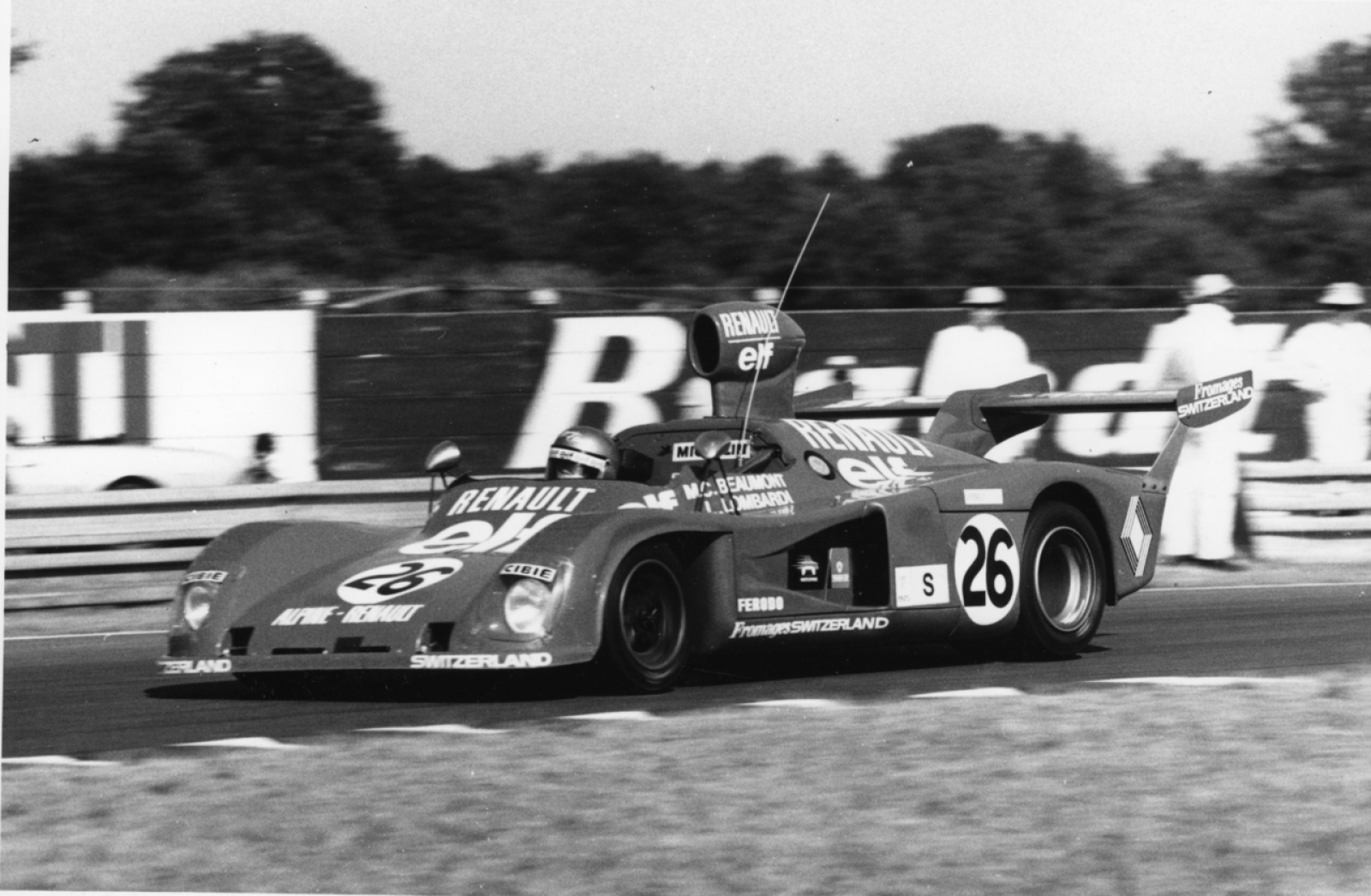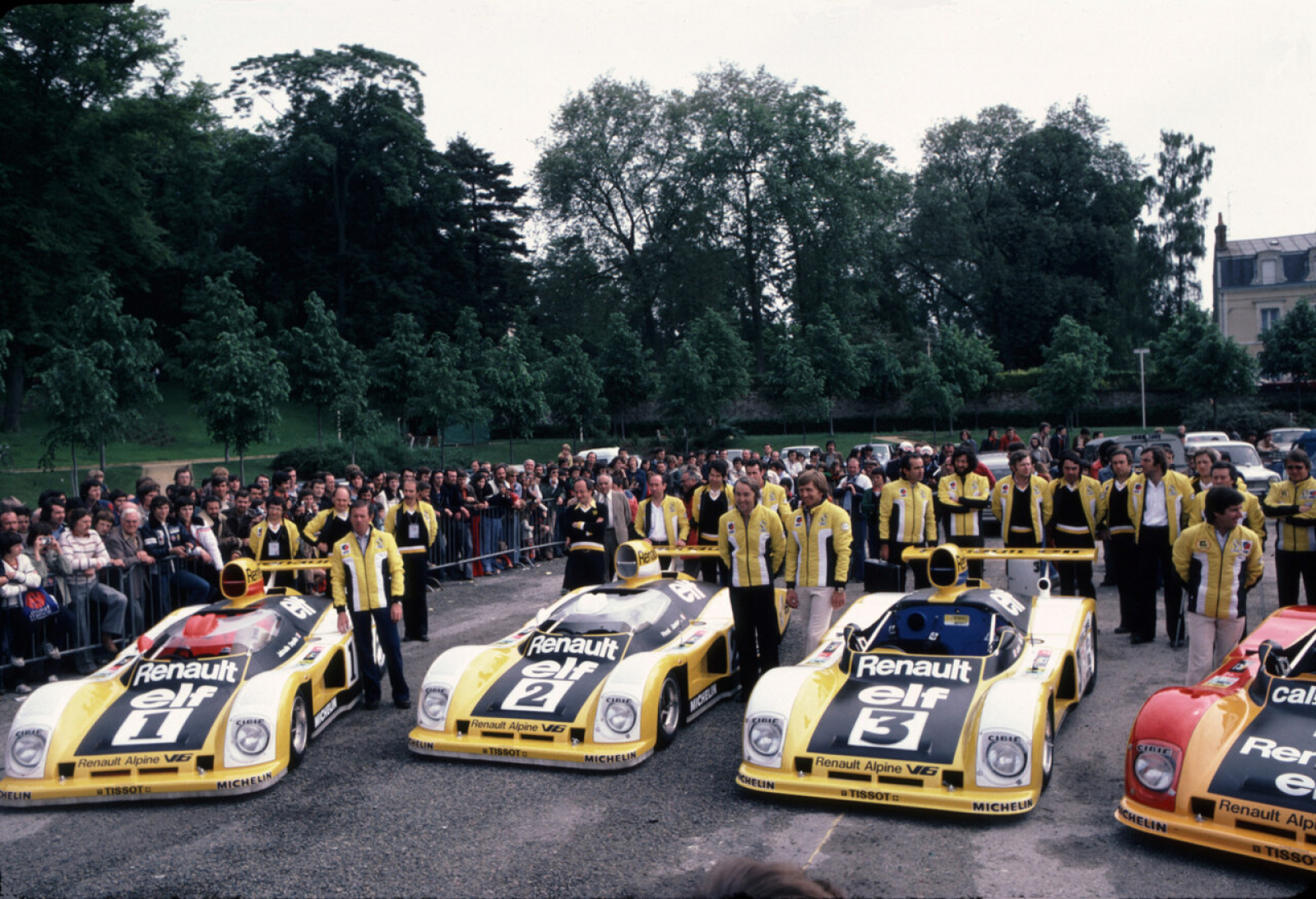From its rookie participation in 1963 to the Hypercar class in 2021, Alpine holds a special place in the history of the 24 Hours thanks to its track record and undying love from French racing fans. The marque has written several chapters punctuated by a methodical rise to victory, and this first installment pays tribute to its pioneers at Le Mans, from the 1960s to the overall win in 1978 under the name Renault-Alpine.
Upon founding Alpine in 1955 while working as a Renault dealer, Jean Rédélé (1922-2007) decided on the name as a nod to the winding roads in the Alps, one of his favorite places to drive. Though the marque rose to fame in the early 1970s in rally with the legendary A110 (known as the “Berlinette”), the 24 Hours of Le Mans proved just as important in its history.
1963-1969 | The pioneers make their mark
From 1964 to 1969, Alpine racked up six class victories at Le Mans, However, for its debut in 1963, three M63s took the start driven by Christian Heins/José Rosinski, René Richard/Piero Frescobaldi and Bernard Boyer/Guy Verrier and all were eventually forced to retire. The following year, Alpine finished its first 24 Hours with 17th place overall for Roger de Lageneste/Henry Morrogh and 20th for Roger Masson/Teodoro Zeccoli.
In 1966, Alpine achieved another important milestone, making it into the top 10 at the race with four A210s at the finish: Leo Cella/Henri Grandire (ninth), Jacques Cheinisse/Roger de Lageneste (11th), Robert Bouharde/Guy Verrier (12th) and Mauro Bianchi/Jean Vinatier (13th). The momentum carried on in 1967 when the marque clinched its best result and doubled down in the top 10 thanks to Henri Grandsire/José Rosinski (ninth) and André de Cortanze/Alain Le Guellec (10th). Jacques Cheinisse/Roger de Lageneste finished 12th and Mauro Bianchi/Jean Vinatier 13th.
In 1968, Alpine moved up in the top 10 with André de Cortanze/Jean Vinatier (eighth), Alain Le Guellec/Alain Serpaggi (ninth) and Jean-Luc Thérier/Bernard Tramont (10th). Christian Ethuin/Bob Wollek and Jean-Pierre Nicolas/Jean-Claude Andruet trailed slightly in 11th and 14th places. Unfortunately, in 1969, Christian Ethuin and Alain Serpaggi shared the only Alpine to make it to the checkered flag (12th).
1975-1978 | The road to victory
In 1975, two years after Renault's acquisition of a majority stake in the French marque, a new prototype called the Renault-Alpine A441 took the start in the 24 Hours with female driver line-up Marie-Claude Beaumont and Lella Lombardi. It was the first step in a sporting program that would reach its peak over the next three runnings of the race. The following year, the 2-liter V6 engine that had powered the car driven by Beaumont/Lombardi was modified to supercharge by means of a turbocharger. It was installed in the first Renault-Alpine A442 entrusted in 1976 to Jean-Pierre Jabouille, Patrick Tambay and José Dolhem but was forced to retire.
In 1977 and 1978, Renault-Alpine faced off against Porsche in the celebrated tradition of great duels between marques at the 24 Hours. Three A442s were fielded, and pole-sitters Jean-Pierre Jabouille/Derek Bell held the lead in the race until retiring on Sunday morning. The first turbocharged prototype to win Le Mans the previous year, the Porsche 936 snatched its second victory in a row thanks to Jacky Ickx, Jürgen Barth and Hurley Haywood.
In 1978, Renault-Alpine quickly asserted its domination in the race, first with the A442B of Didier Pironi/Jean-Pierre Jaussaud, leaders for the first six hours, then with the A443 of Patrick Depailler/Jean-Pierre Jabouille, in the top spot for 12 hours until forced to retire. Pironi and Jaussaud, who never fell from the top 4, retook the lead all the way to the checkered flag. The winning French duo was followed by the Porsches of Jacky Ickx/Jürgen Barth/Bob Wollek (second) and Hurley Haywood/Peter Gregg/ Reinhold Joest (third).
Its goal at the 24 Hours achieved, Renault then turned its attention to another objective: to win with turbocharged engine technology in Formula 1. Alpine would not triumph again at Le Mans or in endurance racing until the early 2010s. More to follow in the second installment in this series.
PHOTOS (Copyright - ACO Archives): LE MANS (SARTHE, FRANCE), CIRCUIT DES 24 HEURES, 24 HOURS OF LE MANS. From top to bottom: in 1976, the #19 Renault-Alpine A442 and #20 Porsche 936, pioneer turbocharged prototypes at Le Mans; the #62 A210 of Cella/Grandsire that secured Alpine's first top 10 spot at the 24 Hours; the Alpines at the finish of the 1967 running of the race; the #46 and #45 Alpines of Grandsire/Rosinki and Bianchi/Vinatier at the finish of the 1967 24 Hours; Alpine's return in 1975 with the female duo of Beaumont/Lombardi in the #26; the four Alpines at the start of the 1978 24 Hours (note only the winning #2 of Pironi/Jaussaud kept the aerodynamic cockpit screen for the race).
![Alpine at the 24 Hours of Le Mans [1/2]: Pioneers and winners from 1963-1978](https://www.lemans.org/media/cache/api_news_large/assets/fileuploads/61/4d/614d9f1ff08ba.jpg)




